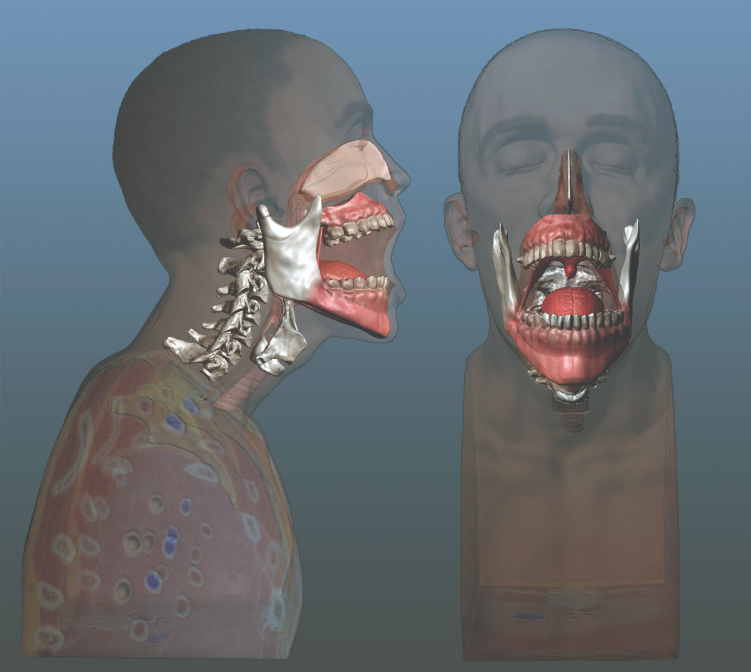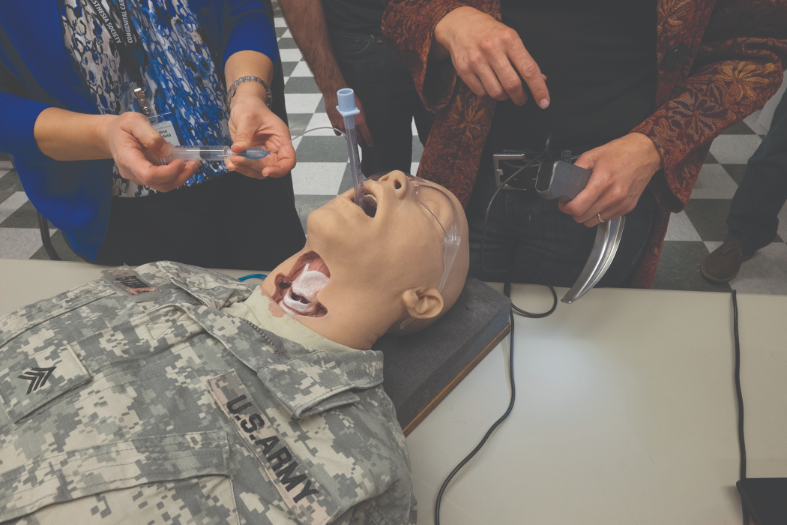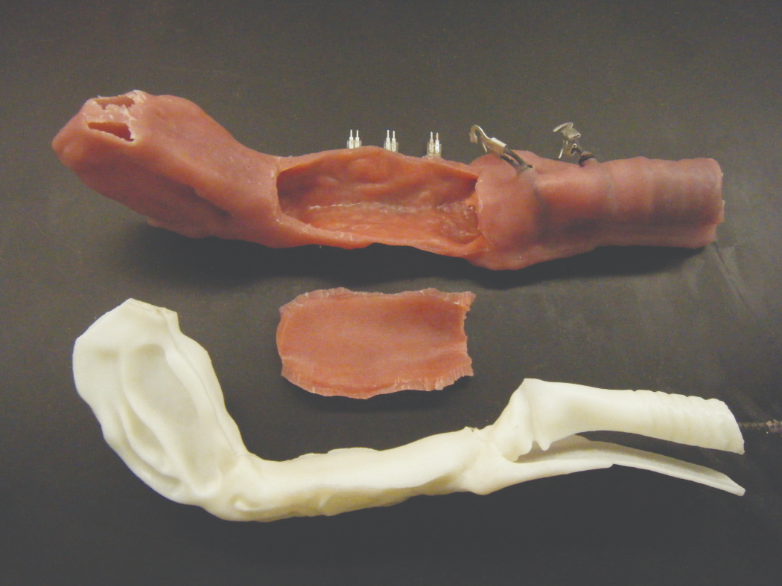Researchers at the University of Minnesota Medical School are working to overcome these obstacles. After obtaining images of magnetic resonance imaging (MRI) and computed tomography scans of human airways, they used Vitrea visualization software to segment the tissues and airspace in the scans. The researchers then used Mimics and Maya imaging software to refine the designs and generate STL files. The university used a Fortus 250mc™ 3D Printer to build models of the skeletal system such as the skull and jaws. Researchers then created molds by pouring silicone rubber over the pattern. After the molds cured, they used them to produce soft tissue models.
The university also used an Objet350 Connex3 3D printer to print a much more realistic version of the cervical spine than is used on current airway trainers. They chose the Objet350 Connex3 3D Printer for its ability to print multiple materials in a single model to simulate the complex mix of range of motion and restriction of motion found in the cervical spine. The University of Minnesota built four prototypes and provided them to the Army for evaluation. The 3D printed prototypes accurately reproduced live human geometry and used materials that closely simulate the properties of human tissues.
“The initial reaction from the Army was that this is the most realistic trainer they have ever seen,” said Jack Stubbs, associate program director at the University of Minnesota Medical School. “They told me that if it was available it would be the only trainer they would use.”


